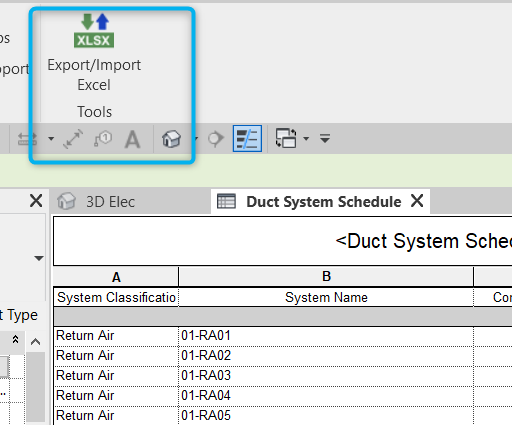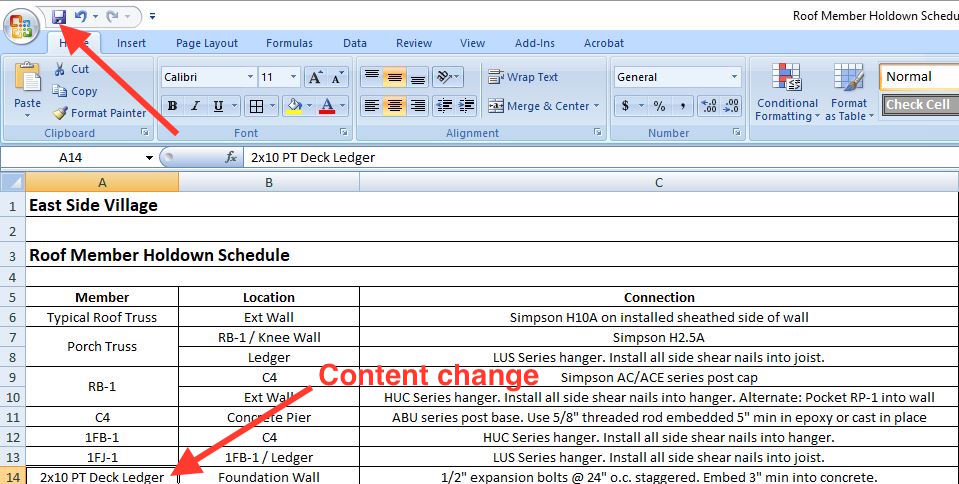Revit Tools for Every Job: Your Ultimate Design Buddy
Wiki Article
Breaking Barriers: Excel Importation Techniques for Advanced Revit Users
Discover different information importation techniques and master Excel assimilation to improve your Revit modeling capabilities. With our methods and suggestions, you can get over importation challenges and come to be a true professional in making use of Excel for your Revit jobs.Advanced Revit Users: Leveraging Excel for Importation
You can conveniently take advantage of Excel for importation as an innovative Revit user. Excel is an effective device that can considerably enhance your process and performance in Revit. With its ability to manage huge amounts of data and do complicated computations, Excel can be an important property in managing and arranging your job info.One means to leverage Excel for importation is by utilizing the "Web link Excel" attribute in Revit. This feature enables you to link an Excel spreadsheet directly into your Revit job, allowing you to upgrade and synchronize data between the two programs. When dealing with timetables or tracking changes in your project., this can be particularly beneficial.
One more way to use Excel is by utilizing the "Import/Export" feature in Revit. This feature enables you to import and export information in between Revit and Excel, providing you the flexibility to collaborate with information in both programs. You can import information from Excel right into Revit to develop components such as doors, areas, or wall surfaces, and you can likewise export data from Revit to Excel for further analysis or reporting.

Exploring Data Importation Techniques in Revit Using Excel
Checking out exactly how to import information from Excel into Revit uses effective techniques for integrating info. When you import information from Excel, you can flawlessly move information such as space routines, material lists, and equipment information right into your Revit task. This procedure permits you to conserve effort and time by preventing manual data access.To import information from Excel right into Revit, you can use the "Import/Export" function. This feature enables you to map the Excel information areas to the matching Revit parameters, making certain that the details is appropriately designated within the model. By selecting the ideal import alternatives, you can manage how the data is imported and how it connects with your job.
One more method for importing information from Excel into Revit is by using Eager beaver. Dynamo is a visual programming device that integrates with Revit and allows you to automate jobs and workflows. With Dynamo, you can develop personalized scripts that import information from Excel and manipulate it within your Revit task. This technique provides also much more versatility and personalization options.
Grasping Excel Integration for Advanced Revit Modeling
Grasping Excel integration for innovative Revit modeling involves using efficient techniques to seamlessly transfer information and automate tasks within your job. By taking advantage of the power of Excel, you can boost your Revit modeling process and conserve important time. One vital technique is importing information from Excel spread sheets straight into your Revit design. This permits you to populate criteria, such as room names or material quantities, with convenience. With a few basic actions, you can map the Excel columns to the matching Revit specifications and import the information accurately.One more beneficial approach is exporting information from Revit to Excel. This enables you to extract information from your design, such as routines or product amounts, and analyze it in Excel using formulas, charts, or other powerful tools. By leveraging the abilities of Excel, you can do intricate calculations, create customized reports, and gain important insights into your project.
In addition to data transfer, Excel combination can automate recurring jobs in Revit. By producing macros or manuscripts in Excel, you can automate processes like creating views, creating sheets, or applying typical family members - revit tools. This not only saves time but likewise makes sure consistency across your project
To master Excel assimilation in Revit, it is critical to recognize the information framework and just how Revit connects with Excel. By acquainting yourself with the available devices and strategies, you can unlock the full possibility of Excel assimilation and take your Revit modeling to the following degree.
Overcoming Importation Challenges: Excel Techniques for Revit Specialists
When getting over importation difficulties, it is very important to be acquainted with reliable Excel strategies that can profit professionals in Revit. As an advanced Revit customer, you comprehend the importance of flawlessly importing data from Excel right into your jobs. However, you might experience numerous difficulties try this out in the process. By making use of efficient Excel strategies, you can get over these obstacles and improve your productivity.
Another helpful strategy is utilizing the "Transpose" feature in Excel. This enables you to convert data from rows to columns or the other way around. When importing data into Revit, this can be especially useful when you have information in a vertical format in Excel, however you require it to be in a straight style in Revit.
Furthermore, making use of Excel formulas such as VLOOKUP and INDEX-MATCH can significantly assist in mapping data from Excel to Revit. These formulas permit you to browse for certain worths in Excel and get matching data from one more column. This can conserve you effort and time when importing big datasets right into Revit.
Excel Information Importation Advice for Advanced Revit Users
By acquainting on your own with efficient Excel tips and tricks, you can enhance your information importation procedure as a sophisticated customer of Revit. Excel is an effective device that can substantially help with the importation of information right into Revit, saving you time and raising your productivity. One beneficial idea is to make use of the "Text to Columns" feature in Excel to divide information into different columns based upon a delimiter. This can be especially helpful when you have information in a solitary column that needs to be split into numerous columns in Revit. Additionally, making use of Excel's "Paste Special" feature permits you to paste data from Excel into Revit while preserving format, read here such as cell shade or font design. This can be specifically useful when importing data that requires certain format in Revit. Another handy trick is to utilize Excel's "Replace and locate" function to rapidly make modifications to your data before importing it into Revit. For instance, you can quickly change specific text or characters with others, saving you the time and effort of manually editing the data in Revit. By utilizing these Excel tricks and pointers, you can improve your data importation process and become a lot more proficient being used Revit.
Final Thought
You have actually now found out valuable methods for importing information from Excel into Revit as an advanced individual. Go in advance, break those obstacles and excel in your Revit jobs!
When importing information right into Revit, this can be particularly practical when you have information in a vertical style in Excel, yet you need it to be in a horizontal layout in Revit.
Moreover, utilizing Excel formulas such as VLOOKUP and INDEX-MATCH can considerably aid in mapping data from Excel to Revit. Furthermore, utilizing Excel's "Paste Unique" attribute enables you to paste information from Excel into Revit while maintaining formatting, such as cell shade or font design.
Report this wiki page